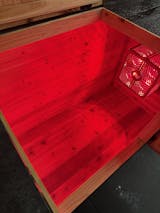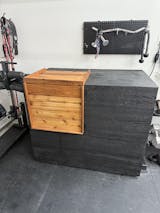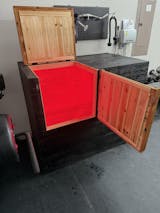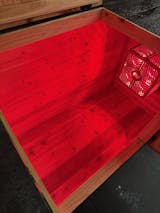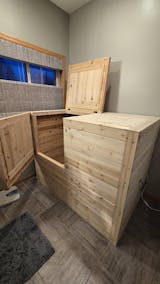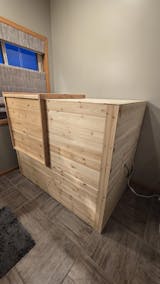How to Make Leak-Proof Socket PVC Connections for Your DIY Cold Plunge
There’s nothing more frustrating than finishing your cold plunge build, only to discover a leak. Save yourself the trial and error by following these best practices to create secure, leak-proof socket PVC connections. Whether you’re a first-timer or a seasoned DIYer, these techniques will help you achieve professional results.
Why Proper PVC Connections Matter
Socket PVC connections are a critical part of building a DIY cold plunge. Poorly sealed joints can lead to leaky connections... With the right tools, materials, and application, you can make durable connections that withstand constant exposure to water and cold temperatures.
What You’ll Need
Before you begin, gather these materials and tools:

- PVC Cutter
- Tape Measure & Sharpie
- 3/4 PVC Pipe
- 3/4" Flexible Spa Hose
- Socket PVC Fittings
- PVC Primer & Cement
- Sandpaper
- Frog Tape
- Paper Towels
You can find many of these items online or at your local hardware store. For convenience, I've linked my recommended products here. If this article is helpful, please consider using them to shop for your parts!
Full Video Tutorial | DIY Cold Plunge YouTube Channel
Step 1: Measure and Cut Your PVC
-
Measure the Internal Depth of Fittings: Check for the ridge inside the fitting where the pipe stops. This depth varies, so measure each fitting and add the depths together to determine the required pipe or hose length.
-
Mark and Cut: Use a PVC cutter for clean, precise cuts. A saw works too but may require extra cleanup.
-
Smooth the Edges: Clean up jagged or rough edges with fine-grit sandpaper.
Step 2: Choose Your Technique For Connecting
Here are three approaches to making PVC socket connections. Make sure to check out the video above for a complete demonstration or if you need clarity on any of the steps.
1. The "Proper" Technique
-
Prime the Pipe and Fitting: Apply primer to both the outside of the pipe and the inside of the fitting. Ensure coverage is even and the full depth of the socket.
-
Apply Cement: Next, follow the same method as priming to both, ensuring complete coverage.
-
Join and Hold: Insert the pipe into the fitting, twist ¼ turn, and hold for 30 seconds. Use a paper towel to clean up excess cement if needed/desired.
2. The Neat Freak Technique
-
Add Frog Tape: Tape the pipe just beyond the fitting depth to create a clean edge for the primer and cement.
-
Prime, Cement, and Join: Apply primer and cement as described in the Proper Technique. Remove the tape after joining. This will leave you with a clean, purple-free finish on your connections
3. Joe's Way – Time to go rogue!
-
Disclaimer: This is how I've joined my socket fittings, pipe and spa hose for the past 8 months or so, and I haven't had any issues. You can test this out if you want, or stick to the "Proper" Method.
-
Skip the Primer: Apply cement directly to the pipe, then the inside of the fitting, and then go back to the pipe and apply PVC Cement again.
-
Join and Hold: Insert the pipe, twist, and hold. This method is quicker and cleaner, but again is more unconventional.
Check out the video above for clarity on this!
Common Mistakes to Avoid
-
Using Old Cement: If your cement is thick or gunky, replace it.
-
Jagged Cuts: Clean edges ensure a better seal.
-
Not Holding Long Enough: Hold connections for at least 30 seconds to prevent them from pulling apart.
-
Dry Primer: Apply cement immediately after priming to ensure a strong bond.
-
Ignoring Ambient Temperature: Work in temperatures above 40°F for proper curing.

Final Tips for Success
-
Allow at least two hours for connections to cure before adding water.
-
Store primer and cement with their applicators (dobbers) in the cans to avoid spills or drying out.
-
Always check fitting depths to ensure precise measurements for your cuts.
Build Your DIY Cold Plunge With Confidence
By following these steps, you can create durable, leak-proof connections for your DIY cold plunge. If you’re ready to take your build to the next level, check out some of the plans and products for stock tank and luxury cold plunges. I've got the best products and plans you'll ever find. They've got direct shopping links, step-by-step video instruction, diagrams and more to save you time, frustration and guess work.
Don’t forget to subscribe to my YouTube channel for tutorials on other essential techniques – like how to make threaded connections and complete plumbing guides.
Reach out with any questions you have! Thanks all!
- Joe



